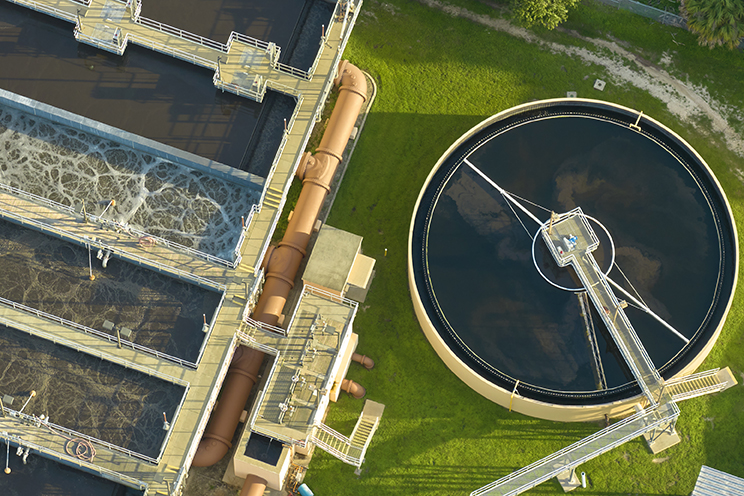In 2024, ASCE provided its latest economic estimate on the investment needed for infrastructure categories to reach and maintain a state of good repair, which would be reflected in the Report Card with a B. This data shows progress made in infrastructure, while highlighting increasing needs ahead.
ASCE’s 2024 Bridging the Gap study, which captures 11 of the 18 Report Card categories, calculated that American families would save $700 annually if Congress “continues to act” with investment levels established in recent fiscal years. That includes appropriation amounts set by the 2021 Infrastructure Investment and Jobs Act (IIJA), 2022 Inflation Reduction Act (IRA), and other legislation. For example, in the two Water Transportation categories–Inland Waterways and Ports – $45 billion would support a full state of good repair, and $32 billion was the anticipated investment over the next 10 years. That leaves a $13 billion gap. For all 11 infrastructure categories in Bridging the Gap, ASCE estimated $2.9 trillion of additional investment would be necessary to achieve good repair. That gap between planned and necessary investments was less than ASCE’s 2020 economic study estimated, illustrating the progress made through recent federal investments.
Ten-Year Gaps with Continue to Act Scenario, 2024-33
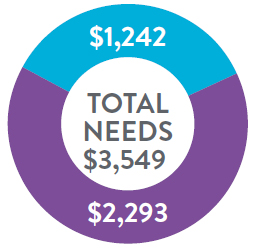
Surface Transportation
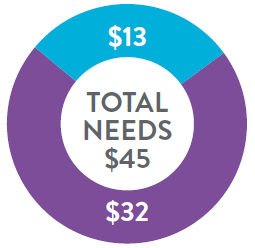
Water Transportation
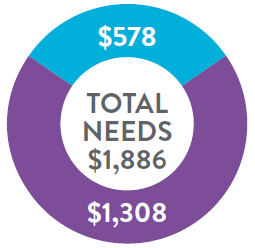
Energy
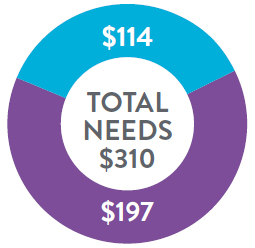
Aviation

Drinking Water, Wastewater, & Stormwater

With the 2025 Report Card for America’s Infrastructure, ASCE estimates investment needs total $9.1 trillion for all 18 Report Card categories to reach a state of good repair. Public data and ASCE’s 2024 Bridging the Gap study forecast $5.4 trillion in public and private investments in the 10-year period, 2024 through 2033, if Congress continues recent funding levels. This leaves a gap of $3.7 trillion in investments for America’s infrastructure if we keep investing at current funding levels. However, if Congress were to snap back to investment levels in place prior to recent increases in federal spending, that gap would increase significantly. In fact, ASCE’s Bridging the Gap study, which assesses just 11 of the 18 categories in the 2025 Report Card, finds that the snapback gap would equal the entirety of the 2025 Report Card gap: $3.7 trillion. That figure does not include broadband, dams, levees, hazardous and solid waste, parks, and schools, which represent, at a minimum, an additional gap of $746 billion for a total of $4.4 trillion.
Additionally, in that snapback scenario, ASCE estimates meaningful economic harm: $5 trillion lost in gross economic output over 20 years, from 2024-2043, and a reduction of $244 billion in U.S. exports in those same years. Pre-2021 levels of federal investment also mean a job loss of 344,000 in one snapshot year of 2033. The reduced investments would result in $1.9 trillion in lost disposable income for American families within the 20 years studied.
Cumulative Investment Needs
BY INFRASTRUCTURE CATEGORY BASED ON MAINTAINING CURRENT FEDERAL INVESTMENT LEVELS
ALL VALUES IN BILLIONS
| Infrastructure System | Needs1 | Funded 2024-332 | Funding Gap 2024-33 |
| Aviation3 | $310 | $197 | $113 |
| Bridges4 | $538 | $165 | $373 |
| Broadband5 | $61 | $61 | $0 |
| Dams6 | $185 | $20 | $166 |
| Drinking Water7 | $670 | $361 | $309 |
| Energy8 | $1,886 | $1,308 | $578 |
| Hazardous & Solid Waste9 | $162 | $146 | $16 |
| Inland Waterways & Ports10 | $45 | $32 | $13 |
| Levees11 | $97 | $7 | $91 |
| Public Parks12 | $106 | $62 | $44 |
| Rail13 | $145 | $113 | $32 |
| Roads14 | $2,233 | $1,549 | $684 |
| Schools15 | $1,100 | $671 | $429 |
| Transit16 | $618 | $466 | $152 |
| Wastewater + Stormwater17 | $983 | $293 | $690 |
| Total | $9,139 | $5,450 | $3,689 |
- Total needs are estimated as deferred maintenance necessary to reach a system-wide state of good repair. Estimates from publicly available data and not adjusted for inflation.
- Assumes investments continue at levels from recent appropriations, as shown by public data and based on authorized amounts set by the 2021 Infrastructure Investments and Jobs Act, 2022 Inflation Reduction Act, and other legislation. State and local investments continue at FY2024 levels. Values not adjusted for
inflation. - Data taken from ASCE Bridging the Gap 2024 study.
- Data taken from ASCE Bridging the Gap 2024 study.
- Data taken from Cartesian and the Fiber Broadband Association.
- Data taken from the Association of State Dam Safety Officials, Congressional Research Service, U.S. Department of Agriculture, Federal Emergency Management Agency, Congressional Budget Office, and the Associated Press.
- Data taken from ASCE Bridging the Gap 2024 study.
- Data taken from ASCE Bridging the Gap 2024 study.
- Data taken from the U.S. Environmental Protection Agency, U.S. Department of Defense, U.S. Department of Energy, and Association of State and Territorial Solid Waste Management Officials (ASTSWMO).
- Data taken from ASCE Bridging the Gap 2024 study.
- Data taken from ASCE 2021 Report Card for America’s Infrastructure and the Congressional Budget Office.
- Data taken from the National Parks Service, the National Association of State Parks Directors, the Trust for Public Land, Property and Environmental Research Center, and Congressional Research Service.
- Data taken from ASCE Bridging the Gap 2024 study.
- Data taken from ASCE Bridging the Gap 2024 study.
- Data taken from the 21st Century Schools Fund.
- Data taken from ASCE Bridging the Gap 2024 study
- Data taken from ASCE Bridging the Gap 2024 study.




